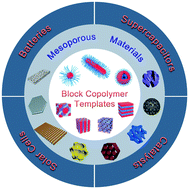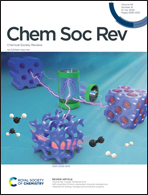Self-assembly of block copolymers towards mesoporous materials for energy storage and conversion systems
Abstract
Self-assembly of block copolymers (BCPs) provides a versatile strategy for controllable preparation of a broad range of functional materials with different ordered structures. In recent decades, this soft-templating strategy has been widely utilized for preparing a wide range of mesoporous materials. These porous materials have attracted tremendous interest in energy storage and conversion (ESC) applications in view of their ability to absorb, store, and interact with guest species on their exterior/interior surfaces and in the pore space. Compared with other synthetic approaches, such as template-free and hard-templating methods, BCP soft-templating protocols show great advantages in the construction of large mesopores with diameters between 10–60 nm, which are suitable for applications requiring the storage or hosting of large-sized species/molecules. In addition, this strategy shows incomparable merits in the flexible control of pore size/architecture/wall thickness, which determines the final performance of mesoporous materials in ESC devices. In the last decade, rapid development has been witnessed in the area of BCP-templated mesoporous materials. In this review paper, we overview the progress of this field over the past 10 years, with an emphasis on the discussions of synthetic methodologies, the control of materials structures (including morphology and pore size/shape), and potential applications particularly in rechargeable batteries, supercapacitors, electro-/photocatalysis, solar cells, etc.

- This article is part of the themed collection: Electrochemistry in Energy Storage and Conversion


 Please wait while we load your content...
Please wait while we load your content...